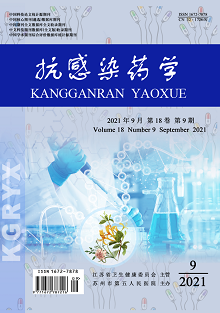YUAN Wen-qing, ZHAO Liang, CHA Ling, ZHU Chong-feng
Objective: To analyze the influence of epidemiology and serotype distribution characteristics of Haemophilus influenzae infection in children on clinical antibacterial medication. Methods: The data of 3 370 children with Haemophilus influenzae infection admitted to the hospital from January 2017 to December 2019 were selected. The age, sex, time of infection, regional distribution and the typing characteristics of Haemophilus influenzae were analyzed, and the effects of the isolation, identification and drug sensitivity test results on clinical treatment of Haemophilus influenzae were analyzed. Results: In the 3 370 children infected with Haemophilus influenzae, there was no significant difference in infection rate between different genders and different regions. The infected children were mainly ≤ 1 year old, and the infection season was mainly spring. 3 381 strains of Haemophilus influenzae were isolated from the specimens of these patients, including 1 825 non-typable strains (accounting for 53.98%) and 1 556 typable strains (accounting for 46.02%). In 1 556 typable strains, there were 507 strains of type A (accounting for 15.00%), 67 strains of type B (accounting for 1.98%), 202 strains of type C (accounting for 5.97%), 372 strains of type D (accounting for 11.00%), 136 strains of E type (accounting for 4.02%) and 272 strains of F type (accounting for 8.04%). The positive rate of β -lactamase in 3 381 strains of Haemophilus influenzae was 48.44%, and the drug resistance rates to compound sulfamethoxazole, ampicillin and ampicillin-sulbactam were 72.81%, 56.61% and 48.44%, respectively. But there was no resistance to meropenem, ceftazidime, cefotaxime and ceftriaxone (sensitivity rate up to 100.00%). Conclusion: Haemophilus influenzae infection age is less than 1 year old was the high incidence group, and the infection rate in spring is higher. The infection rate of untypable strains is more, followed by type A of separable strains. Moreover, Haemophilus influenzae has no drug resistance to meropenem, ceftazidime, cefotaxime and ceftriaxone,so antibcterials with high sensitivity rate could be selected for clinical treatment so as to ensure its antibacterial effect.
